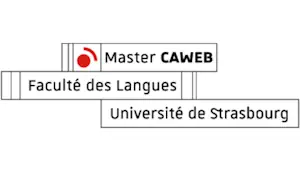How Machine Translation is once again reshaping the translation landscape

Translation, language service providers, and companies have quickly realized that machine translation will never replace a human. However, they have found ways to implement it to work in pairs with the translator to help them without letting the client down. Post editing, hybrid or assisted translation, there are several means nowadays to help a translator by using machine translation.
Machine Translation Post Editing (MTPE)
One of the first components integrating machine translation (MT) to its process was post editing. It consists of pre-translating a document with a machine translation engine and then having it reviewed and corrected by a human translator. Depending on the original machine translated output quality, the workload for the translator will change. For example, if the output is already quite good, then the linguist will only focus on correcting nonsense and basic mistakes. If more is to be reworked then they will take more time rephrasing, sometimes full sentences from scratch.
The client can also choose to only want an intelligible text with no mistake. The translator won’t have to rephrase or make preferential or stylistic choices if the output segment is already understandable. It can help gain a lot of time to have an understandable document quickly. In those cases, we talk about light post editing. Whereas, when the quality to be achieved is on par with human translation, we talk about full post editing.
Post editing can help improve productivity and speed up the translation process. It can be a helpful tool for projects that don’t require a lot of creative output and without an extended translation memory.
Machine Translation Integration
Another method became popular in the past years. Sometimes called translation assisted by machine translation or hybrid translation. It consists of the integration of an MT engine directly into the translator’s Computer Assisted Translation (CAT) tool. That means that, at any time, the translator can see a proposition of the segment being translated provided by the MT engine, often shown in the same panel as the translation memory output.
The MT segments often have a match score, just like a TM entry. Thus, depending on the project settings, certain machine translated segments with a high matching score can be pre-translated.
The goal, is to increase productivity by allowing the translator to have another resource than the translation memory and the termbase to work faster. But this method also has some downsides. Some translators might find it harder to work with some clunky MT segments than from scratch, for those that don’t have translation memory matches.
Another problem may arise when the translator is an independent contractor working with an LSP or agency. In fact, his purchase order can be calculated after delivery in proportion to the use he has made of the TM, which can result in a price lower than the initial estimate. Other companies simply ask the translator to lower their rate for these kinds of projects. Those factors can lead to translators putting effort to change an MT segment as much as possible even when the quality was good to begin with, or simply refuse the project. In the end, it can make the process counterproductive.
This process of integrating MT engines directly into a CAT project is part of a greater model called augmented translation. Which aims to provide in the same place all the tools and info the translator needs when they need it. This model is still very theoretical and rests upon many AI driven technologies.
Conclusion: the Future of Machine Translation
Finally, machine translation has quickly evolved and has reached a level where it is a decent solution in many situations. But we are only in the early steps of its potential and implementation. Progress is being made every day as we discover new ways of implementing MT in different contexts. Translators are not the only ones to benefit from it, like with immediate translation that could benefit everyone on a day-to-day basis. Moreover, with the progress of AI and neural networks more generally, it’s certain that machine translation will continue its evolution.






